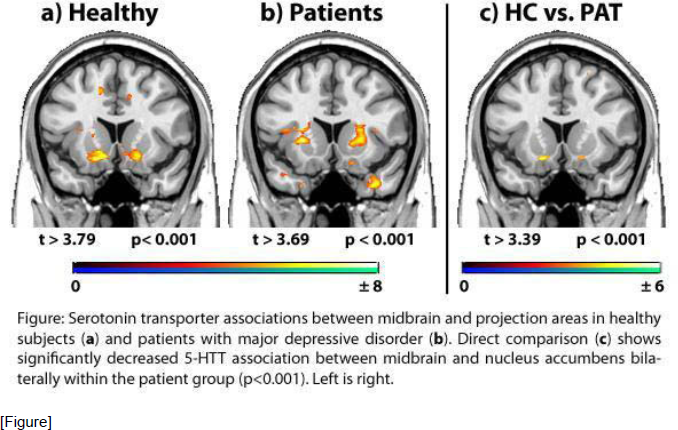No CrossRef data available.
Published online by Cambridge University Press: 16 April 2020
Patients suffering from major depressive disorder (MDD) exhibit alterations in serotonin transporter (5-HTT) binding clinically reflected by lack of hedonic experience. We recently demonstrated the importance to evaluate interregional relationships of neurotransmitter systems, providing important complementary information on a network level.
To identify interregional 5-HTT relationships between the midbrain raphe region and projection areas in MDD patients compared to controls.
Eighteen medication-free patients with MDD and 16 healthy subjects underwent PET using [11C] DASB. 5-HTT binding potential (BPND) maps were computed with the multilinear-reference-tissue-model-2 in PMOD3.1. Voxel-wise linear regression was calculated in SPM8 using midbrain 5-HTT BPND as regressor; group comparisons were assessed by ANOVA (p < 0.001).
Healthy subjects showed positive associations between serotonin transporters located in the midbrain and transporters expressed in the nucleus accumbens bilaterally. Importantly, this relationship was significantly decreased in MDD patients as compared to controls (t = 5.41/4.84, right/left hemisphere; see figure).

This study demonstrates for the first time 5-HTT alterations on a network level in MDD patients between the midbrain and a major projection area. Our results complement previous findings emphasizing the importance of the nucleus accumbens in MDD and indicate a disturbed serotonergic regulation in this key area of reward processing.
Comments
No Comments have been published for this article.